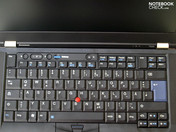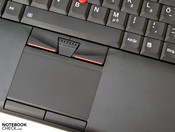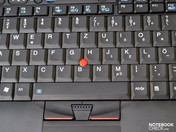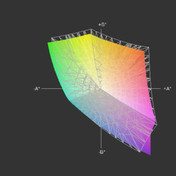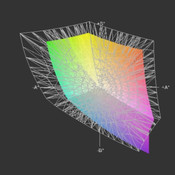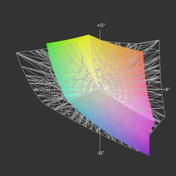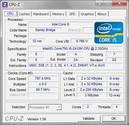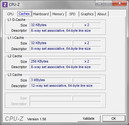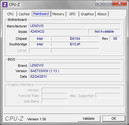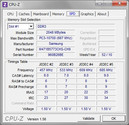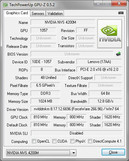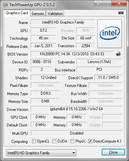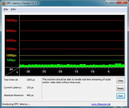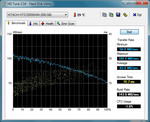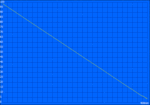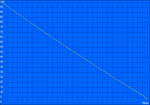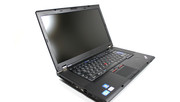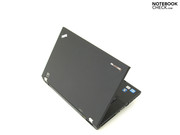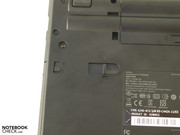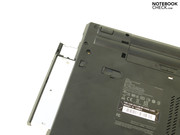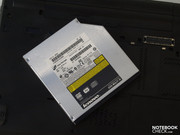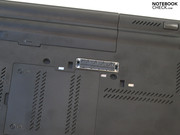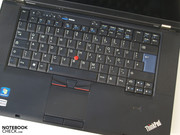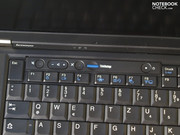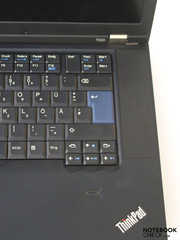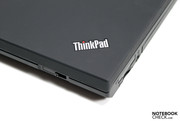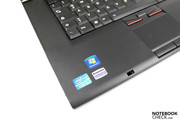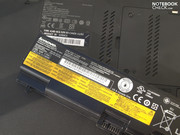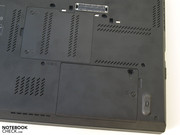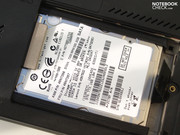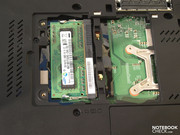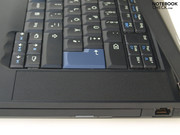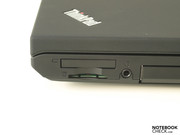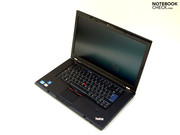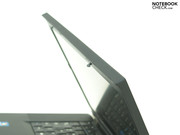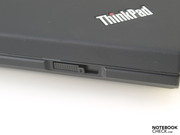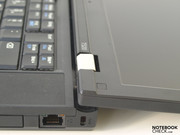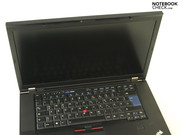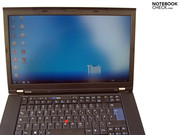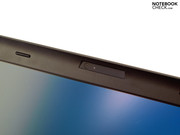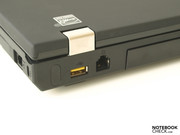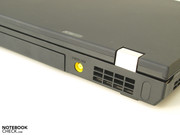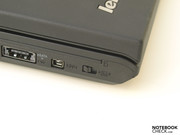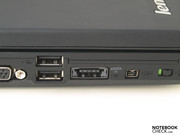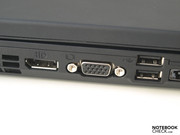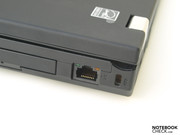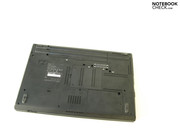Review Lenovo Thinkpad T520 Notebook

The Thinkpad family includes Lenovo's seasoned laptops for the professional field. According to Lenovo's homepage, the T-series offers “the best security, manageability, services and support”. Thus, it sets itself apart from the top of the significantly stronger W-range. In return, the X-range scores with greater mobility.
Simultaneous to the T420, we also looked at a 15.6 inch model from the T520 range. Here, the only significant change in comparison to the T510 is also the hardware refresh with the new Sandy Bridge processors from Intel.
Our test device's exact name is T520 4240-4CG. An Intel Core i5 2410M CPU supplies the adequate computing performance inside. Either an NVIDIA NVS 4200M graphics card or solely the Intel HD Graphics 3000 integrated in the processor takes care of pixel calculations (Optimus). A four gigabyte DDR3 main memory and a fast 500 GB hard disk with a revolution speed of 7200 rpm complete the configuration.
Aside from that, there is a range of differently configured models to choose from. Here the computing performance spectrum ranges from the various Core i5 processors up to Intel's Core i7 2620QM (quad core). In regards to graphic performance, you can leave out the dedicated 4200M graphics card if preferred. Therefore, the rating of performance dependent parts is subject to the actual configuration and doesn't necessarily apply to other models.
The T520's immediate opponent is found in Dell's Latitude E6520, which can be configured at most with an i7 and the NVS 4200M graphics card as well. Unlike Lenovo, Dell uses a new look. We hope to provide you with all details in this review.
Case
In regards to design, we have had this case in review a few times before. Starting with the T500 over the T510 up to the latest T4x0 series, Lenovo couldn't compel to make any surprising design modifications in the current T520, except for minor ones. Considered by itself, sticking to the tried and tested isn't at all bad, but innovations don't stop in case design. And compared to the competition, you would think that a high-priced laptop such as the T520 would, in a sense, deserve a complete metal case now, though.
Instead, Lenovo still sticks to the plastic look & feel. Nevertheless, the T520, practically dressed entirely in black has a certain air of elegance and the matt slightly roughened surfaces have a pleasant feel anyway.
The base unit scores with an excellent torsional stiffness. The pressure resistance is just as good with exception of the known weakness in the ultra bay's slot. The display lid can cope well with the applied forces when lifted at a corner and hardly deforms. Moreover, it also copes well with selective pressure. However, the display bezel yields even under little pressure and allows image deviations to become visible on a turned on screen.
The metal hinges look a bit small in comparison to the laptop's size. However, they barely allow teetering after the opening angle has been adjusted. Nevertheless, they aren't pulled tight enough to prevent the opening angle from changing its angle in unstable situations (train journeys). In return, single-handed opening and closing isn't a problem. The display can be opened to a bit more than 180 degrees.
A ramshorn hook system and the well-known clamshell design protect the laptop against foreign objects penetrating between the keyboard and display accidentally. The opening mechanism is comfortable to use, but creaks a bit. In addition to the hard disk, a main memory module is now easily accessible via the maintenance covers.
Connectivity
You can also say nothing's changed in regard to connectivity and interface layout in comparison to the predecessor, T510. This implies that no USB 3.0 has been installed and the user has a total of four USB 2.0 ports, one of which is an eSATA/USB 2.0 combo and yet another is a powered USB port. Consequently, faster data transmissions to and from external mass memories are possible via eSATA. However, increasingly more mass memory manufacturers are relying on USB 3.0 rather than eSATA.
Two USB 2.0 ports and the eSATA/USB 2.0 socket are located on the left edge's center. In addition, there is an IEEE 1394 (FireWire) port in the front area. It is mainly used for fast data exchange between the computer and multimedia or other peripheral devices, for example video cameras. Both video interfaces, analog VGA and a digital display ports, are also placed on the left edge center. Thus, left-handed users are definitely disadvantaged depending on what's in use.
It looks better on the right. There is a 4in1 cardreader, which supports SD, SDHC, SDXC and MMC formats, and an ExpressCard34 slot, which makes it possible to extend the T520's functionality. The combo audio port, the optical drive, an RJ45 for connecting the laptop to the Ethernet and a Kensington Security slot follow towards the rear.
The rear accommodates the aforementioned powered USB 2.0 port and the power socket. In addition, the device can be connected to a telephone system via RJ11. The front edge is the only side free of connections.
The use of a docking station is handy if the laptop is to be coupled fast and without tedious re-connecting to an existing office environment after mobile use. The for a business notebook obligatory docking port is, as usual, on the case's bottom in our notebook. It remains interesting to see, which docking stations will be offered outside of the USA. As usual, the ThinkPad Port Replicator Series 3 (180 US dollars, also available in Europe) and the Mini Dock Series 3 (220 US dollars) can be chosen from. In addition, the MiniDock Plus for about 250 US dollars is now also offered. Together with the built-in screen, it allows the configuration with up to four monitors. The latter two are, according to the website sales site, only available in "US / Canada / LA".
Communication
In any case, the communication configuration is extensive, although the optional broadband modem wasn't installed in the test device. Fast connections via WiFi hotspots are possible with the built-in Intel WiFi Link 1000 BGN, even with standard n support when required. The laptop can be integrated into Ethernet networks via the Intel 82579 LM Gigabyte Network Connection. Moreover, an RJ11 modem socket is available for cabled connections, for allowing internet connections via the telephone line in regions with a poor infrastructure. Other configurations are possible depending on the model.
Security
Apart from the Kensington Security lock for physical securing against theft, the T520 is also equipped with a fingerprint reader among other things. A splash water proof keyboard and a shock proof hard disk protect the system against data loss in case of the corresponding mishap.
Supplies
As usual, Lenovo is skimpy with supplies. Merely necessary parts, such as battery and power adapter, are included. Besides that, there is only a bit of brief, printed information in the box. The user is responsible for creating recovery carriers. However, it shouldn't be a problem with the comfortable ThinkVantage tools.
Warranty
The warranty for all laptops from the T-series is 36 months in Europe. The standard warranty period is only one year in the USA. Various warranty options are offered there and in Europe for an extra charge.
Input Devices
The T520 doesn't differ from its predecessor or from its smaller brother, the T420 in terms of input devices. Here is a summary:
Keyboard
Prolific typists will like the keyboard's good, mechanical qualities, the well dosed key drop, clear pressure point and, if you disregard the swapped CTRL and FN keys, the standard layout. Hot keys for volume control and the aforementioned ThinkVantage button are located on the left above the keyboard. The keyboard light, built into the upper display bezel, could prove to be helpful in dim surroundings.
Touchpad and Trackpoint
The somewhat roughened touchpad shows a non-slip surface with good gliding traits. It supports multi-touch gestures. Navigating precisely with the mouse isn't a problem in any case. A part of the touchpad buttons is placed at the beveled edge. They are smooth-running and respond well over their entire length. They don't click loud, either.
Alternately, the red trackpoint can be used instead. It allows very precise navigating with the mouse cursor without having to revise positioning. The correlating buttons work perfectly and not too loud.
Display
Appropriate for a business device, Lenovo equips the T520 with a matt screen and thus meets the requirements placed on display workstations. Alike the predecessor, three alternatives are available, all in a 15.6 inch, 16:9 size and with a built-in antenna for a broadband modem. The potential buyer is spoilt for choice with HD, that is 1366x768, HD+, that is 1600x900 or FHD, that is 1920x1080 pixel resolutions.
| |||||||||||||||||||||||||
Brightness Distribution: 70 %
Contrast: 670:1 (Black: 0.33 cd/m²)
A screen called LEN40B1 from Lenovo is installed in our test device. It is the alternative with a resolution of 1600x900 pixels. The one in the T510 had the same monitor label. Therefore, the assessments are quite similar.
The low black value, the large contrast ratio and the good maximum and average brightness are pleasing. The illumination could be a bit more homogeneous, though. Nevertheless, dimming isn't apparent for the naked eye anyway. As to the color spectrum, there is an improvement in comparison to the smaller brother, T420. At least sRGB can be covered quite well. The display doesn't stand a chance with AdobeRGB. The difference in view of color reproduction in especially high-end displays becomes well obvious in a comparison with the Dell XPS 15.
The viewing angle stability is typical for notebooks. So, its generous horizontally and tight vertically. Only slight deviations from the ideal, perpendicular viewing angle cause image deviations, visible as dimming, respectively bleaching. Additionally, color deviations turn up quite early when looking down on the screen.
Performance
The Thinkpad T520 is based on the QM57 chip set. It's offered with a range of second generation Core i processors, called Sandy Bridge. The performance spectrum ranges from various Core i5 CPUs up to the Intel Core i7 2820QM quad core processor.
Our T520 test laptop is at the start with a Core i5 2410M CPU. It is a midrange dual core processor. It can process up to four threads at the same time due to Hyper Threading. Its base clock rate of 2.3 GHz can be increased to 2.6 GHz (2 cores loaded), respectively 2.9 GHz (1 core).
The processor can address up to eight gigabyte of DDR3-1066/1333. Four gigabytes, divided over two gigabyte modules, was installed in our test sample. This means that at least one module becomes redundant in case of a memory upgrade. One bank can be easily accessed via the maintenance cover on the bottom. In return, the second is a lot harder to access (keyboard). The installed main memory is exploited efficiently due to the pre-installed Windows 7 Professional 64 bit, in contrast to a 34 bit operating system. Thus, nothing is standing in the way of a memory upgrade.
The DirectX 10 capable Intel HD Graphics 3000, built into the CPU, is used in the low load range. Our test device can fall back on the dedicated NVIDIA NVS 4200M graphics card with increasing load. Switching is unnoticed by the user due to the Optimus technology. To be on the safe side when in doubt that a program is running with the right graphics card, you should check the configuration beforehand. The user can also simply configure the preferred graphics card himself.
Our performance tests were all executed with the NVIDIA NVS 4200M, which has been installed in the fully equipped Thinkpad T520 at hand. For comparison, the same chip, with a lower clock rate, was used in the recently reviewed Dell Latitude E6420.
The business graphics card positions itself in the entry level range in terms of 3D performance. The NVS range is especially optimized for stability and business applications. The NVS 4200M also supports PureVideo HD (VP4) for decoding HD videos (H.264, VC1, MPEG-2, Full Spec Blu-Ray Decode). Monitors with a resolution of up to 2560x1600 pixels can be connected via the display port. One gigabyte of DDR3 RAM are tethered to the 64bit wide memory bus.
Now let's first look at the system's application performance. For this, we use the PCMark Vantage test which assesses the interplay of single components and rates them with a figure. Our test configuration achieves 6644 points here and thus can reach gaming notebooks such as the Asus G53JW-SZ098V (740QM, GeForce GTX 460M), for example. The Dell XPS 15 FHD (840QM, GeForce GT 435M) is also on about the same level. Our test laptop can benefit from the fast 7200 rpm hard disk, although it is still remote form laptops with a hybrid hard disk or even SSD system disks.
We have several tests available for assessing the CPU performance, starting with the 3DMark06 CPU rating, over the Cinebench Rendering tests up to SuperPi and Wprime. We can record that our test system's results correlate to that of a configuration with a Core i5 2410M CPU.
| PCMark Vantage Result | 6644 points | |
Help | ||
Graphics Performance
Let's look at our Cinebench test results once more. But this time at the shading rate, which assess the graphics card's OpenGL performance. Our test system can score 5355 points in the Cinebench R10 64 bit Shading Test. Thus, the T520 positions itself in the immediate vicinity of laptops with a GeForce GT 540M or even Radeon HD 6550M graphics card in our database. So, it exceeds the Latitude E6420 that reaches 4471 with the same, but lower clocked graphics card and weaker processor, with surprising clarity.
It looks different in the 3DMark tests. The E6420 and our T520 are on the same level throughout the tests. The graphics chip places itself in the range of a GeForce 320M, respectively GT 130M in the 3DMark06 test (1280x1024). Interestingly, even the incorporated Intel HD Graphics 3000 can come close to the 4000 point mark, depending on the test configuration.
Our T520 has really not been designed for CAD applications. A look at the SPEC Viewperf 11 benchmarks proves this. The T520 can again surpass the Latitude E6420 across the board, but the overall performance remains in the lower field of our database, just before the NVS 3100M. Graphics solutions from the Quadro FX or FirePro category supply a multiple of performance here.
| 3DMark 11 | |||
| Resolution | Settings | Value | |
| 1280x720 | Performance Combined | 490 points | |
| 1280x720 | Performance Physics | 3409 points | |
| 1280x720 | Performance GPU | 539 points | |
| 1280x720 | Performance | 609 points | |
| 3DMark 05 Standard | 9801 points | |
| 3DMark 06 Standard Score | 4992 points | |
| 3DMark Vantage P Result | 2142 points | |
| 3DMark 11 Performance | 609 points | |
Help | ||
| SPECviewperf 11 | |||
| Resolution | Settings | Value | |
| 1920x1080 | Siemens NX | 3.29 fps | |
| 1920x1080 | Tcvis | 0.97 fps | |
| 1920x1080 | SolidWorks | 6.68 fps | |
| 1920x1080 | Pro/ENGINEER | 1.02 fps | |
| 1920x1080 | Maya | 6.27 fps | |
| 1920x1080 | Lightwave | 8.97 fps | |
| 1920x1080 | Ensight | 6.36 fps | |
| 1920x1080 | Catia | 3.71 fps | |
There are a few options in relation to mass memory. Aside from the conventional hard disks, the buyer can also choose configurations with an SSD, which rotates at a speed of 7200 rpm. The Hitachi HTS725050A9A offers a gross capacity of 500 GBs, whereas a part is reserved for the hidden recovery partition.
The rates recorded by HDTune and CrystalDiskMark meet our expectations. The use of an SSD could speed up boot and load times considerably and improve the laptop's subjective work speed decisively.
A HL-DT-ST DVDRAM GT33N serves as the optical drive. It is in an ultra bay slot and can thus be replaced by another device or even a dummy for reducing weight when required. There are also insets available that can accommodate a second 2.5 inch hard disk.
Gaming Verdict
Computer games will unlikely belong to the primary application field of an office device made for business use. However, they reflect the possible 3D performance of a computer quite well. Our expectations aren't set very high considering the hardware configuration and the 3DMark results. The one or other cultured game after work is possible. Nevertheless, the requirements shouldn't be set beyond medium graphics details in a modified resolution, depending on the game.
| low | med. | high | ultra | |
|---|---|---|---|---|
| StarCraft 2 (2010) | 149 | 30 | 19 |
Emissions
System Noise
The T520 doesn't show any irregularities in use with low load and stays at a constant noise level of 32.5 dB(A). It can be perceived as a low pitched noise. The fan noise remains on an idle level for a long time when the load is increased, for example in 3D applications, only to turn up to 34.4 dB(A) later. A maximum noise level of a very audible 36.8 dB(A) can be reached.
Nevertheless, you can be content with an overall fairly pleasant background noise in planned office use.
Noise level
| Idle |
| 32.5 / 32.5 / 32.5 dB(A) |
| HDD |
| 33.4 dB(A) |
| DVD |
| 36.4 / dB(A) |
| Load |
| 34.3 / 36.8 dB(A) |
 | ||
30 dB silent 40 dB(A) audible 50 dB(A) loud |
||
min: | ||
Temperature
The T520 stays all over cool in idle mode. The temperatures rise with increasing load and it reaches the maximum temperatures in the vent's vicinity.
In order to estimate the maximum possible temperatures, we execute a stress test of several hours where CPU and GPU are loaded to 100% (Prime95 & Furmark). The wrist-rest and touchpad even remains pleasantly cool here. The CPU's core temperatures climb to 86 degrees Celsius, the GPU's to a maximum of 83 degrees Celsius, which are just as acceptable rates.
(+) The maximum temperature on the upper side is 39.3 °C / 103 F, compared to the average of 34.3 °C / 94 F, ranging from 21.2 to 62.5 °C for the class Office.
(+) The bottom heats up to a maximum of 38.1 °C / 101 F, compared to the average of 36.8 °C / 98 F
(+) In idle usage, the average temperature for the upper side is 24.8 °C / 77 F, compared to the device average of 29.5 °C / 85 F.
(+) The palmrests and touchpad are cooler than skin temperature with a maximum of 27.9 °C / 82.2 F and are therefore cool to the touch.
(±) The average temperature of the palmrest area of similar devices was 27.6 °C / 81.7 F (-0.3 °C / -0.5 F).
Speakers
Value shouldn't be placed as high in a business device as in a multimedia or gaming laptop. The maximum volume is just sufficient for indoors and the sound remains undistorted. However, the sound proves to have poor bass.
In order to enjoy music, you should therefore use external speakers or high-quality headphones. They can be connected to the 3.5mm combo audio socket. The transmission is undistorted and static-free in the test (audio test only, no measurement). The combo socket is not faultless and requires special headsets.
Battery Life
Our test system came with a 57 watt hour lithium ion battery in this case. There are also other battery options available. For example a 9 cell battery and an additional 9 cell battery slice. The nine cell battery and 9 cell battery slice are supposed to supply a battery life of up to 30 hours according to the manufacturer's site.
A maximum runtime of almost seven hours is possible with the 6 cell battery. BatteryEater's Reader's Test recorded 408 minutes in energy savings mode and with disabled wireless modules and minimum brightness.
Only 80 minutes of mobile use are possible, recorded as a minimum by Classic Test. This test was executed in "high performance" mode with maximum brightness and enabled wireless modules.
We could do research on the internet for almost five hours via WiFi hotspot in brightness 12/15 and in energy savings profile in both practical tests. Movie entertainment ends after almost three hours in maximum brightness and "Video" profile.
The battery life tests were all executed with the incorporated HD 3000 Graphics chip in order to save energy. The only exception was the Classic Test that ran was performed with the NVS 4200M. Overall, the battery runtimes met our expectations for this hardware configuration.
A long battery life is not only accomplished with a large battery capacity. The power consumption has to be accordingly low as well. To achieve this during low load, Lenovo relies on Nvidia's Optimus technology. Either the incorporated graphics chip or the dedicated NVIDIA NVS 4200 graphics card is used to achieve this. Switching is automatic and without the user's intervention.
The computer system only need between 7 and 16 watts in low load. The power requirement can increase up to 76.3 watts during load. Thus, the power consumption overall is appropriate for this hardware configuration.
| Off / Standby | |
| Idle | |
| Load |
|
Key:
min: | |
Verdict
As could be seen in the T420, many things have remained untouched, apart from the performance increase that was to be awaited with the new processor generation. This is just as true for the case's design as for the pre-installed, convenient ThinkVantage tools. Not even the interface variety or placement has been modified in comparison to the T510. The user still has to live without USB 3.0. Instead, there is an eSATA/USB combo port available. Not all communication options have been exhausted in the test laptop. The broadband module wasn't built in. But the other things are impressive: modem, Bluetooth version 3.0, WLAN with standard n support and gigabit Ethernet.
The display is not least pleasing due to its good contrast. It also manages will with the sRGB color spectrum. It meets the requirements for a display workstation with its anti-reflective surface and is also suitable for mobile use.
According to the manufacturer, a battery life of up to 30 hours is allegedly possible with the 9 cell battery and the 9 cell battery slice. We reached a realistic, possible battery life of up to almost 5 hours with our battery with a capacity of 57 Wh (WLAN test).
The Thinkpad T520 thus represents a solid notebook with good application performance and, thanks to Optimus, good mobility qualities for business clients. It is definitely to be placed in the office field in view of performance. However, it's not suitable for CAD applications despite the dedicated graphics card. But the Thinkpad W520 is designed for that and its review will follow shortly.








